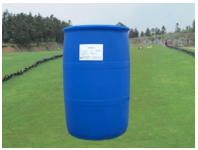Surfactants with excellent properties have become the focus of research. Gemini surfactants are compounds with two hydrophobic groups, two hydrophilic groups and one linker, which are similar to two common single chain surfactants connected by a bridge. The structure of Gemini surfactant inhibits the repulsion between hydrophilic groups in the process of surfactant ordered aggregation, which greatly improves the surface activity. Compared with traditional surfactants, it has high surface activity, low Krafft point and good calcium soap dispersion, and simultaneous interpreting in biological safety, low irritation and biodegradability. Gemini surfactant is expected to play an important role in textile industry, especially detergent.

When the anionic surfactant or nonionic surfactant is used to drive oil, the surfactant will be adsorbed on the surface of oil droplets and particles. The surface charge density of rock or oil drop increases, which makes the electrostatic repulsion force of oil drop and rock surface increase, and the oil drop is entrained by oil displacement system, so as to improve oil displacement efficiency and oil recovery. A kind of
Reducing interfacial tension is the basic basis of surfactant flooding and the result of amphiphilic molecules replacing interfacial solvent molecules. The more amphiphilic molecules adsorbed on the interface, the closer the molecular weights of amphiphilic molecules, oil phase molecules and water molecules are equal to, and have larger absolute values, the lower the interfacial tension is. Surfactant properties, oil-water phase properties, reservoir environment (temperature, salt content) changes and oil displacement performance will also affect.
Surfactant is a kind of functional fine chemicals. Due to their amphiphilic structure and properties, surfactants self polymerize in solution to form various kinds of ordered molecular assemblies, such as micelles, reverse micelles, vesicles, liquid crystals, etc. The size of the particles or the thickness of the aggregated molecular layer of these ordered molecular assemblies are close to the order of nanometer, which can provide suitable sites and conditions for the formation of ultrafine particles with "quantum size effect". Moreover, the molecular aggregates themselves may have similar "quantum size effect".
Therefore, the ordered molecular assemblies of surfactants exhibit various practical functions, such as emulsification, solubilization, wetting, adsorption, permeation, dispersion, defoaming, thickening and lubrication. They are used as auxiliaries for printing and dyeing, pesticide emulsifiers, dispersants for polymer emulsion polymerization, and can also be widely applied in mining, petroleum, emulsion polymerization and other industries. At the same time, the application of colloidal rheology, microemulsion and liquid crystal template has also attracted people's attention. In recent years, surfactants play a very important role in the preparation of inorganic materials, nano and nano composite materials, molecular sieves and porous materials.